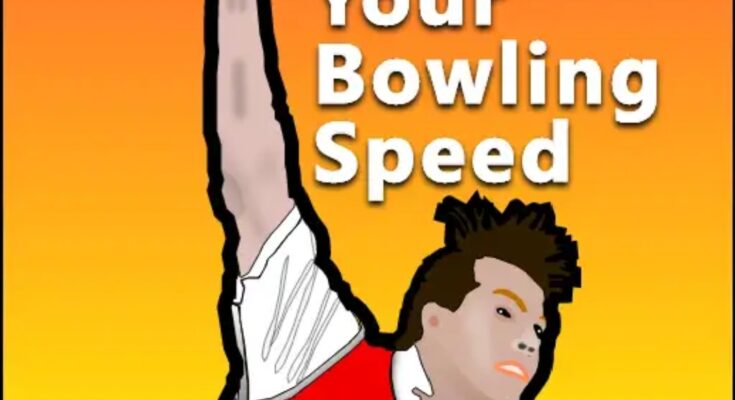heck Bowling Speed
Bowling speed is a critical aspect of cricket that can distinguish an average bowler from an exceptional one. Fast bowlers rely on speed and accuracy to intimidate batters and gain an edge on the field. However, determining how fast a ball travels after release is equally essential for coaches, analysts, and bowlers themselves. Measuring bowling speed can help players identify their strengths, address weaknesses, and refine techniques.
In this guide, we delve into everything about “Check Bowling Speed”, its methods, benefits, and the tools involved. Whether you are a budding cricketer, a coach, or a cricket enthusiast, this review provides the insights needed to effectively measure bowling speed.

Check Bowling Speed
“Check bowling speed” refers to the process of measuring the velocity of a cricket ball as it travels from the bowler’s hand to the batter. Speed is typically measured in kilometers per hour (km/h) or miles per hour (mph). This process can be carried out using various tools and methods, ranging from advanced radar guns to manual calculations.
The importance of checking bowling speed lies in its ability to:
- Evaluate Performance: Helps bowlers understand their speed capability and improve their techniques.
- Encourage Competition: Inspires bowlers to achieve higher speeds, enhancing competitiveness.
- Assist Coaches: Provides data to create tailored training sessions for improvement.
Specialty of Check Bowling Speed
The specialty of checking bowling speed is rooted in its precision and application. Here are a few standout features:
- Data-Driven Insights
Measuring bowling speed provides quantifiable insights into a bowler’s performance. This data is invaluable for strategizing and tracking improvements. - Technological Advancements
Modern devices like radar guns and mobile apps make speed measurement accessible and user-friendly. - Adaptability
Bowling speed measurement can be applied in real-time during matches or practice sessions, offering flexibility for various scenarios. - Enhanced Training Regimens
Knowledge of bowling speed helps in creating specific drills to increase speed, accuracy, and endurance.
Uses of Check Bowling Speed
The ability to measure bowling speed serves various purposes in cricket:
1. Performance Evaluation
Bowling speed is a key performance indicator. It helps players and coaches identify strengths, track progress, and set realistic goals.
2. Talent Scouting
Speed measurement is critical during trials and talent hunts, enabling selectors to identify potential fast bowlers.
3. Match Preparation
Understanding a bowler’s speed can influence match strategies, such as field placement and bowling plans.
4. Injury Prevention
Monitoring speed over time can help detect early signs of fatigue or improper technique that may lead to injuries.
Main Theme of Check Bowling Speed
The core theme of “Check bowling speed” revolves around enhancing accuracy, performance, and cricketing standards. This process is essential for players at every level, from beginners to professionals, and it integrates seamlessly with modern technology.
The consistent measurement of speed fosters improvement, inspires innovation in coaching techniques, and keeps cricket thrilling for spectators. Whether it’s through radar guns or smartphone apps, the main goal remains the same: to measure speed accurately and use the data effectively.
Pros and Cons of Check Bowling Speed
| Pros | Cons |
|---|---|
| Improves player performance. | Radar guns can be expensive. |
| Provides accurate data. | Apps may lack high precision. |
| Encourages competitive spirit. | Manual methods can be time-consuming. |
| Easy to use with modern technology. | Environmental factors may affect results. |
| Useful for coaching and training. | Requires setup and proper usage. |
Conclusion Check Bowling Speed
Checking bowling speed is an essential aspect of cricket that combines science and skill to enhance performance. Whether you’re an aspiring cricketer or a seasoned coach, understanding and utilizing speed measurements can help you unlock potential and achieve greater success. With advancements in technology, measuring bowling speed has become more accessible, enabling players to grow and shine on the field.
For those passionate about cricket, investing time in “Check bowling speed” is a step toward mastering the game. As cricket evolves, so does the need for precise data, and measuring speed remains a vital tool for improvement.
FAQs Check Bowling Speed
1. What is the best tool to measure bowling speed?
The radar gun is considered the most accurate tool for measuring bowling speed. It is widely used in professional cricket for its precision.
2. Can I measure bowling speed without a radar gun?
Yes, you can use mobile apps or manual calculations (Distance ÷ Time) to estimate bowling speed, though they may not be as precise.
3. How accurate are smartphone apps for speed measurement?
Smartphone apps are moderately accurate but may not match the precision of professional-grade radar guns.
4. Does wind affect bowling speed?
Yes, environmental factors like wind can impact the ball’s speed, especially in outdoor settings.
5. What is the average bowling speed for beginners?
Beginners typically bowl at speeds between 80-100 km/h, but this can vary depending on age, skill level, and training.
This comprehensive review of “Check Bowling Speed” ensures you have all the information needed to measure, analyze, and improve bowling performance. With tools, techniques, and tips at your disposal, you’re equipped to make the most of this essential cricketing skill.



